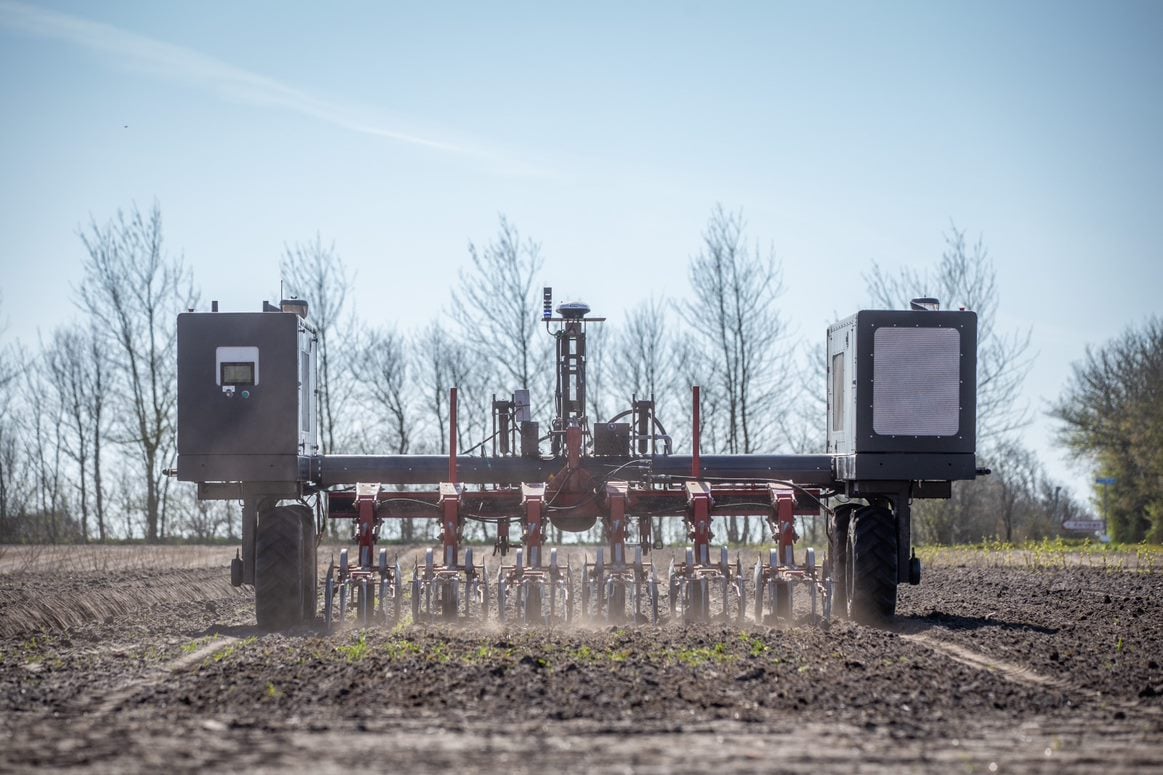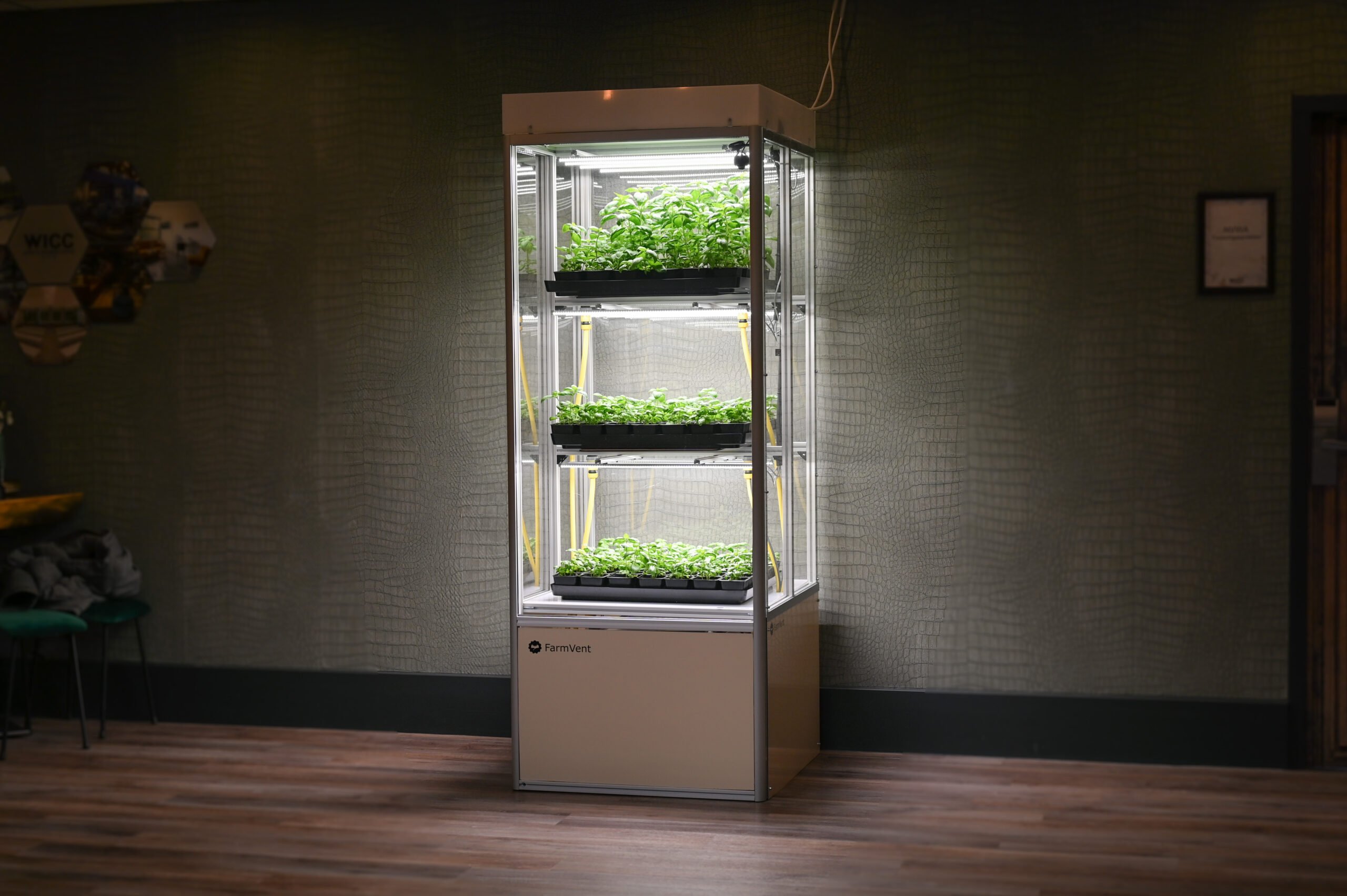
To grow healthy grapes and apples, weeding and spraying tasks need to be repeated several times during the growth process. Depending on the year – and if some pest occurs – more passages are required. In addition to being repetitive, these chores tend to be expensive – consider refueling tractors and labor costs – and time-consuming. Automated robots represent a solution to these problems, relieving farmers from repetitive tasks and optimizing them.
Robs4Crops is an EU-funded project – via the Horizon scheme – involving 16 partners across Europe. Universities, agricultural robots companies, and farmers are all part of the program. The venture started in January 2021 with Wageningen University coordination. Improving productivity, reducing agriculture’s environmental impact, and decreasing reliance on hand labor are the main goals. AI and robot technology can be leveraged to achieve those.
What the project brings is a robotic platform that can assist farmers with different tasks, and that can be tailored to different settings too. During the two years project, the tool is being perfected, in order to make it available to everyone in Europe once the trials are done. To gather more data and to improve the platform’s efficiency, the project spans 4 years – to try the robot in two different farm years. This year’s pilot tests are starting this month, in different locations all over Europe – Spain, France, Greece, and the Netherlands.
“With Robs4Crops we combine technology and business expertise, as well as on-field know-how by growers. They are those giving insight and inputs to perfect the system. The idea is to bring all the members of the value chain together,” told innovation Origins Maja Žikić from Foodscale Hub, communication manager for the project.

Maja Žikić
Growth lead at Foodscale Hub
She works for Foodscale Hub – an Impact Venture Studio – which coordinates communication for Robs4Crops.
What solutions is Robs4Crops bringing to farmers?
Robs4Crops aims to make available for farmers two kinds of solutions. The first one is a fully automated one – with robots to make weeding and spraying tasks autonomous. The second one will allow them to retrofit their tractors with a smart box. It will automate processes without the need for an additional tool.
The Danish AgroIntelli is providing the robots – they developed an autonomous tool-carrier robot – while the smart box is brought by the French AGreenCulture. Both solutions are to tackle processes’ automatization in two ways while aiming at the same goal.
Žikić: “Both platforms will be topped up with a number of smart implements for weeding and spraying. The goal is to help farmers get rid of repetitive tasks in different settings, from orchards to vineyards.”


Robots to tackle different challenges
Mechanical weeding in the French Loire’s vineyards, for instance, isn’t that convenient, both in terms of costs per hectare and in terms of tools needed. Robs4Crops is testing in situ Ceol, a robot that is used for fewer passes per season while being cheaper too. It aims to reduce the use of chemicals as well as labor costs. Modularity is another aspect to be tested, which allows the platform to adapt to different working scenarios.
Apple orchards in Catalonia require several spray applications every year to preserve the fruit from fungal diseases. To do so, a lot of chemicals need to be used, as well as much labor. Current techniques apply uniformly the crops’ medication, regardless of trees’ growing stage and disease severity from plant to plant. Similarly, in Greece’s table grapes vineyards, a number of spraying passages are needed to produce high-quality fruit.
Robs4Crops is tackling both challenges by automating the process of spraying by combining different tools from their partners – namely precision sprayers by Teyme and a device by AGreenCulture transforming human-dependent machines into autonomous communicating robots.
Crop rotation in potato farming systems is another challenge addressed by the project. Ranking as the 4th largest producer of potatoes, the Netherlands is the country chosen for this pilot. In this case, a robot will also help with several tasks – seeding, weeding, and harvesting, to name a few.

Quality and safety
“Robots can relieve farmers from the burden of daily tasks by reducing them. Having robots in the fields means having some time to focus on more valuable tasks – such as production analysis,” points out Žikić. Product quality would thus be one of the aspects to benefit the most from such an approach.
Delegating spraying routines to robots also has one more advantage. “Farmers will be less exposed to hazardous chemicals. What’s more – in light of the European Green Deal’s principles – there are significant fuel, water, pesticide, and emissions reductions, helping EU farmers go green,” says Žikić.

Farmers’ concerns
However, the integration of robots in agriculture isn’t as seamless. The use of new kinds of machinery also entails insurance concerns – in the event of an accident, will insurance companies cover expenses?
“We keep close contact with our farmers and we collect their input daily, on both technical and more general aspects. These concerns – as well as the ethical aspects involved – are taken very seriously. They aren’t alone. Pilot managers are there to assist them in learning how to operate the new tools safely,” Žikić adds.
As the tests will follow the seasons’ rhythm, autumn and winter will be the times when the data collected will be analyzed. The scientists in the labs will rearrange the robots accordingly and then off to the fields again, as the project will have its second round of trials.

